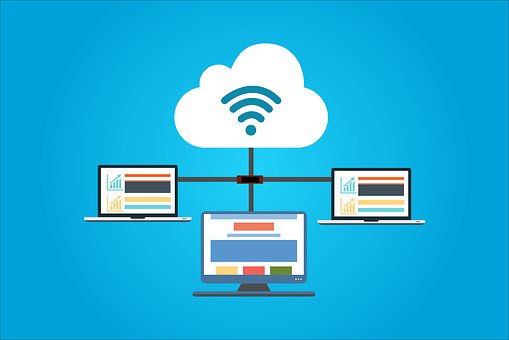For enterprise-level organizations, the decision of the right cloud services provider is an important one. Cloud service providers offer cloud computing that can include infrastructure-as-a-service, software-as-a-service,and platform-as-a-service. These are relevant to software developers who are using languages such as Python 3. They are also relevant to businesses and organizations.
The following are some of the things to know and keep in mind in terms of choosing cloud services such as cloud consulting, cloud app development, and cloud optimization for your business.

Types of Services Providers
Before going into the specific provider companies and how to compare them, there are categories of cloud services, briefly touched on above.
IaaS models mean that you receive infrastructure components from a cloud services provider. Otherwise, if this weren’t cloud-based,an enterprise would need an on-premises data center. SaaS providers offer many different kinds of technology used by businesses, including customer relationship management (CRM) and HR software. PaaS providers offer infrastructure services for an application stack.
Know the Options
There are three main options for cloud services providers. The big three are Amazon Web Services (AWS), Microsoft Azure, and the Google Cloud Platform, but beyond those, there are many other smaller options. AWS has been around the longest and has the advantage in terms of market share. Then, there’s Microsoft and Google. Other options include the IBM Cloud and Rackspace.
There are pros and cons to the main three services providers. While AWS is the leader, some organizations need to look elsewhere either instead of AWS or to supplement AWS because of specialized needs they may have.
If an enterprise is already Microsoft-centric, for them, it may make sense to go with Azure.
Beyond the options, the following are more specific things to think about.
Security
Security is one of the biggest concerns when you’re choosing a cloud services provider. You need to know what your own security goals are, so you can compare them against the security available from the providers. You have to think not only about the security features that come standard from vendors, as well as what you have to pay to add. Are you willing to pay? Are you going to have to use third-party partners to improve the technology and ensure it’s what you need?
In addition to security, keep compliance in mind as well. For example, if you have to follow HIPAA compliance regulations, not all cloud services providers may work for your needs.
Cost
Cost can’t be the only consideration, but it needs to be a big one.
With AWS, the cost is based on the number of hours used, rounded up. There are pricing models that include pay-as-you-go, where you are just paying for what you use, as well as reserved for one or three years. The upfront cost for this is based on what you use. Volume discounts are available with AWS as well so that you can scale up as needed and get discounts for using more specific services.
Google Cloud Platform’s billing is based on instances per second used. Azure tends to be more expensive, and they bill on-demand by the hour or depending on the product, perhaps the gigabyte or millions of executions. As you can see, determine estimated prices can be complex because you have to factor in considerations like what your current or predicted usage is.
Technical Capabilities and Management
When you’re comparing cloud services providers, you’ll have to think about the technical capabilities, and user-friendliness as well as what management might look like. Think about how easy it will be to deploy, manage and upgrade all of your software and applications. As was mentioned, if your organization is already Windows-based, Azure can make the most sense.
Standard APIs should be used, and there should be a system in place and well-defined for event and change management. Also, even if you don’t plan to use the hybrid cloud model, you want a provider that offers this in case that changes down the road.
Finally, think about administration support as you compare different providers. You should be able to go through the Service Level Agreement (SLA) and feel comfortable with it. You should receive performance reports from the provider, and there should be mechanisms in place that will allow you to track services and monitor them. Billing and monitoring should also be automated so that you know what you’re using, there’s transparency in pricing and services, and you’re not finding that you’re often facing unexpected costs along the way.

